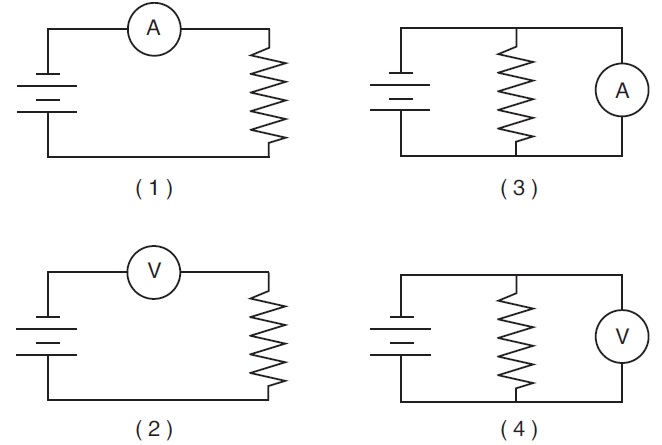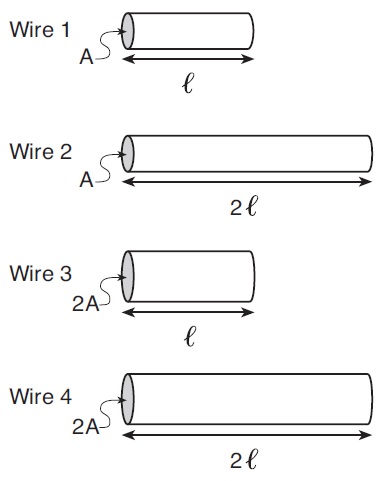- An electric field exerts an electrostatic force of
magnitude 1.5 × 10−14 newton on an electron
within the field. What is the magnitude of the
electric field strength at the location of the
electron?
1) 2.4 × 10−33 N/C
2) 1.1 × 10−5 N/C
3) 9.4 × 104 N/C
4) 1.6 × 1016 N/C
- The potential difference between two points,
A and B, in an electric field is 2.00 volts. The
energy required to move a charge of 8.00 × 10−19
coulomb from point A to point B is
1) 4.00 × 10−19 J
2) 1.60 × 10−18 J
3) 6.25 × 1017 J
4) 2.50 × 1018 J
- An electrostatic force exists between two
+3.20 × 10−19-coulomb point charges separated
by a distance of 0.030 meter. As the distance
between the two point charges is decreased, the
electrostatic force of
1) attraction between the two charges decreases
2) attraction between the two charges increases
3) repulsion between the two charges decreases
4) repulsion between the two charges increases
- When an isolated conductor is placed in the
vicinity of a positive charge, the conductor is
attracted to the charge. The charge of the
conductor
1) must be positive
2) must be negative
3) could be neutral or positive
4) could be neutral or negative
-
The electroscope shown in the diagram below is made completely of metal and consists of a knob, a stem,
and leaves. A positively charged rod is brought near the knob of the electroscope and then removed.
 The motion of the leaves results from electrons moving from the
The motion of the leaves results from electrons moving from the
1) leaves to the knob, only
2) knob to the leaves, only
3) leaves to the knob and then back to the leaves
4) knob to the leaves and then back to the knob
-
Which circuit diagram represents the correct way to measure the current in a resistor?

- A metal sphere, X, has an initial net charge of
−6 × 10−6 coulomb and an identical sphere, Y, has
an initial net charge of +2 × 10−6 coulomb. The
spheres touch each other and then separate.
What is the net charge on sphere X after the
spheres have separated?
1) 0 C
2) −2 × 10−6 C
3) −4 × 10−6 C
4) −6 × 10−6 C
- The diagrams below represent four pieces of
copper wire at 20.°C. For each piece of wire,
ℓ represents a unit of length and A represents a
unit of cross-sectional area.
 The piece of wire that has the greatest resistance is
The piece of wire that has the greatest resistance is
1) wire 1
2) wire 2
3) wire 3
4) wire 4